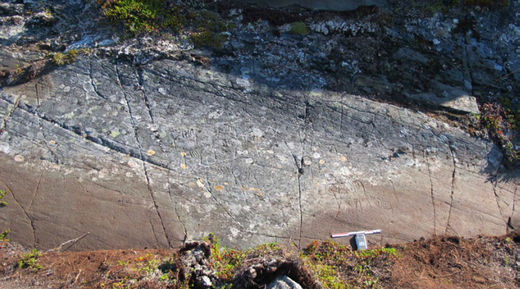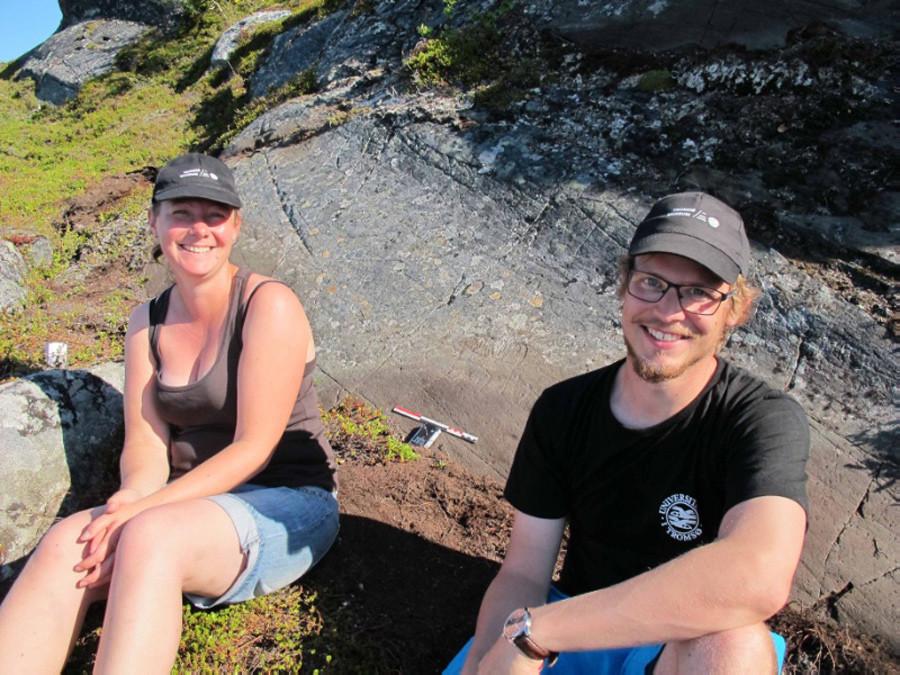The carvings were found by Erik Kjellman, a leading research technician at Tromso University, while he was doing field work at Tommerneset village, Nordland County, in northern Norway.
"I am 29 years old and cannot really retire now," he said. "I will never be involved in anything like this again."
Kjellman said the site was "unique in an archaeological context."
"It was quite by chance that I went past the place at a time when the light made it possible to glimpse a petroglyph," he said, referring to an image made by removing part of a rock surface by carving.
"The petroglyphs give us insight into how those who lived here viewed the world around them, and [they] are a direct imaging of their world," said Anja Roth Niemi, project manager at Tromso Museum.
According to Tromso University, the carvings date back to around 4,200-5,200 BC, making them nearly 7,000 years old. All in all, there are some 30 figures depicting reindeer and elk, each between 10 and 40 centimeters in length.
"The figures have naturalistic detail, which marked the ribs and antlers of reindeer and ears and 'chin beard' of elk," the university said in a statement.
The scientists, however, say that there could be more figures, as the site hasn't been widely investigated yet.
"So far, we have not found figures of humans or animals other than reindeer and elk," Niemi said.
She added that the images were carved in this precise site at Tommerneset village because this is where people allegedly met and transferred their knowledge.
.@TromsMuseum med sensasjonelt helleristningsfunn i #Varanger: http://t.co/uPqeXkcEpg pic.twitter.com/AYoDywPIDR
— NRK Troms (@nrktroms) August 26, 2015The Tommerneset find is not the first discovery of prehistoric carvings in Norway. In 1973, thousands of rock carvings were found by Professor Knut Helskog from University of Tromso at Alta in northern Norway in 1973.
The site was placed on the UNESCO list of World Heritage Sites and has been considered Norway's only prehistoric site so far. The earliest carvings were dated to around 4,200 BC, according to archeologists.





It's important to note that folks at this time and place were so well off that they could invest a lot of hard labour using expensive tools to fashion a billboard to those who came after them. That requires a certain attitude, social leadership and organization, technical tools and skills and enough of the wherewithal of life to be otherwise provided for the artists who also had to envisage and design this display but motivate the enterprise to their community as a worthwhile endeavour.
'Come on fellow humans. Let us set aside the catching and making of food, clothing, shelter and defense. This is more important. Let's carve grooves into these rocks according to plan...'
The origin of unions.